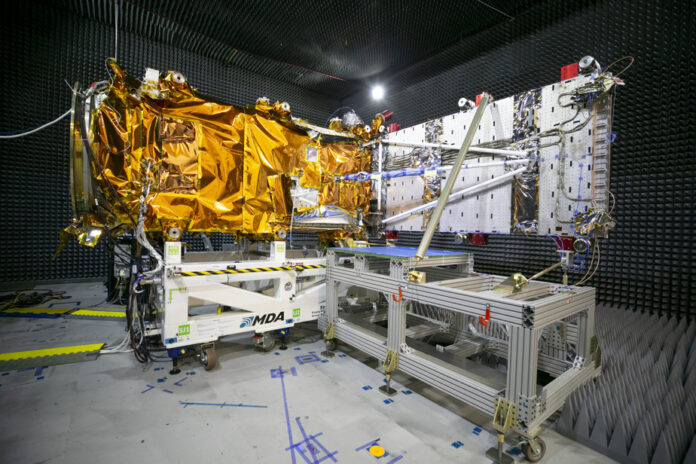Assured that its client had obtained sufficient financing, the Montreal space equipment manufacturer MDA agreed to supply 198 communications satellites to Telesat for its network called Lightspeed.
The 2.1 billion contract announced Friday should lead to the hiring of 350 skilled workers, technicians and engineers in addition to the thousand who already work at the Sainte-Anne-de-Bellevue plant, west of Montreal, said Luigi Pozzebon, vice president of satellite systems at MDA. Capital expenditures are planned at the plant.
Other projects are expected to bring the factory’s total workforce to 1,500 within a year, he added. The factory’s order book now stands at 215 satellites.
Separately, the Telesat Lightspeed contract comes with an option for 100 additional satellites, for an additional undisclosed amount.
This long-awaited contract – the largest in MDA’s history – allows the firm to launch in a big way its digital technology, which is more versatile than analog devices because it is based on software. This is an important milestone for the company, said MDA CEO Mike Greenley. “Our approach was to come up with a software-configurable […] digital satellite model,” Greenley said, noting in broad strokes that this large order allows us to move quickly into full-scale production:
The previous customer, the American GlobalStar, ordered 17 satellites of a different type in February 2022, an order expected to bring revenues of 415 million to MDA between 2022 and 2024.
Both products are designed to operate “in constellation”, i.e. circulating in large numbers in multiple orbits and communicating with each other to provide extensive ground coverage. Their number and multiple orbits ensure that at least one satellite is always in position to communicate with one of the operator’s ground antennas.
MDA says it hopes these two orders will lead to further contracts with other customers.
The contract with Telesat had been in the air for some time, but did not materialize before due to funding problems with the Canadian prime.
Thales Alenia Speed told Agence France-Presse on Friday that its offer for Lightspeed had “expired for some time”.
Asked about the strength of Telesat’s funding, Mr. Greenley expressed confidence and observed that MDA’s technology “has created for them the savings they needed to move forward.” Telesat says it is saving $2 billion on the total project thanks to MDA’s offer and said it has already funded 156 of the 198 satellites ordered from the Montreal factory, saying the rest will be funded by future revenues from the Lightspeed network.
This state of affairs prompted a lot of questions from stock analysts following MDA’s stock during a conference call held after the announcement of the contract.
The Telesat Lightspeed project, supported by Ottawa and Quebec, has among other vocations to provide internet coverage across the vast Canadian territory. In effect, the 198 satellites ordered will provide global coverage, says Pozzebon: “The 100 satellites in the option would add robustness, depth and capacity” in the amount of data that can be transmitted, Mr. Pozzebon explained. In the planned orbits, Telesat could increase the number of its satellites up to 500 machines, if demand requires it.
To build Telesat’s 198 satellites, MDA will need to invest about $50 million at the Sainte-Anne-de-Bellevue plant, which includes a 30,000 to 60,000 square foot expansion, Pozzebon said (l factory is currently 372,000 square feet).
This expansion will allow a capacity of two digital satellites per day. Telesat anticipates a rate of one satellite per day for the Telesat order, Pozzebon says. This leaves capacity for other customers currently approached by MDA.
According to MDA CEO Mr. Greenley, the company will first finalize the engineering of the project and clarify its relationship with suppliers, then slowly start production, increasing production rates towards 2025.
Telesat plans to launch its first MDA satellites in 2026, with a fully operational network in 2027. In 2021, Telesat expected the network to be operational in 2024.
The Sainte-Anne-de-Bellevue plant also produces antennas and all kinds of components used in space.















